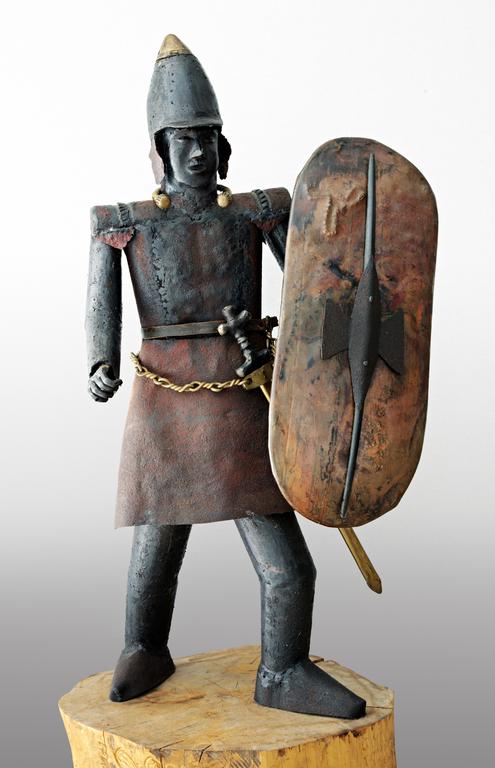Sergio Pacori: Guerriero celtico, 2005 (Celtic Warrior)

Iron, 50 x 110 x 46 cm
What can be seen today as sculpture no. 3 of the Celtic sculpture trail Cerda & Celtoi in the basement of the Europaeum of the Europäische Akademie Otzenhausen began with a huge surprise: a crate full of weapon remains, unpacked by the stunned postal service of the academy. Sent by Sergio Pacori, who represented Italy in this project in 2005. The meaning of this action was warlike in the truest sense of the word, because Sergio Pacori made a Celtic warrior sculpture ("Guerriero celtico") from these weapon remains during the first week of the symposium "Cerda & Celtoi". It consists of remains of grenades, armour plates and similar items.
The autodidact Sergio Pacori, (*1933 in Gargano, Italy) lives and works today in Gorizia (Italy). There, the former full-time computer scientist is known as "the man who turns bombs into art". For his iron sculptures (mainly religious motifs), he basically uses original weapon remains from the battlefields of the First World War. He searches for these with a metal detector near his home town of Gorizia, where they are still hidden in the ground (Battle of the Isonzo). In this way Pacori gives a very special dimension to his work, which he sees as a peace mission: he transforms the testimonies of tragedy into works of art and into messages of hope.
Gorizia has been a divided city since the end of the Second World War: Gorizia in Italy, Nova Gorica in Slovenia. Although it is still divided between two countries, thanks to the European Union, the borders are becoming increasingly blurred.